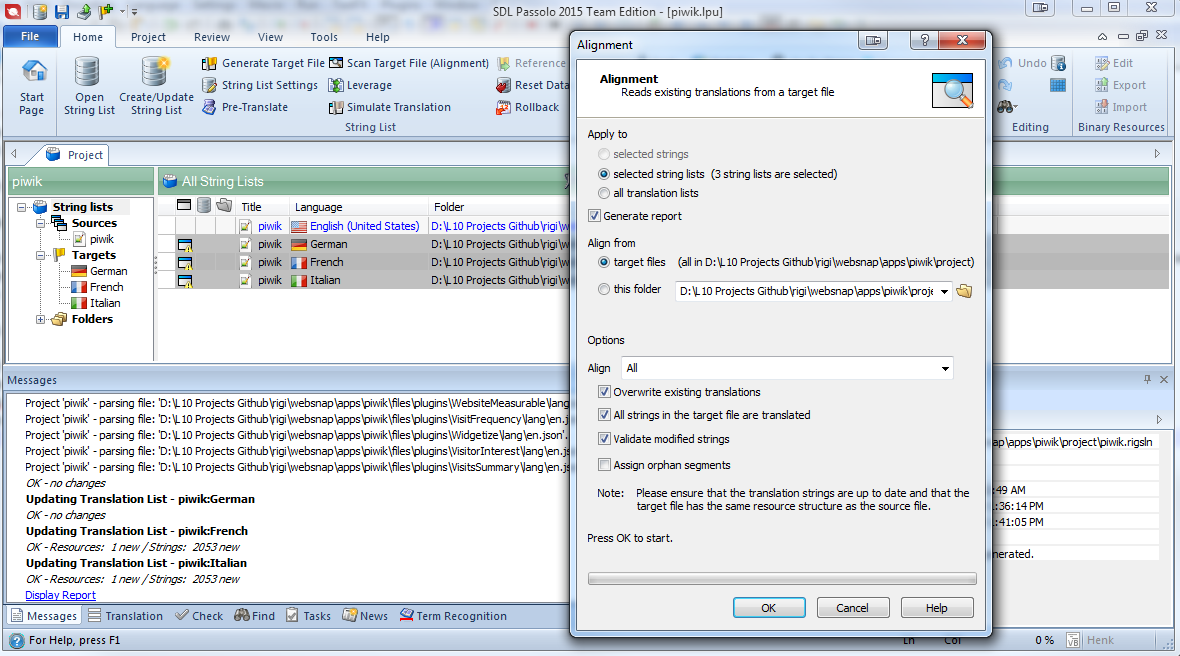Alignment
Alignment is to reuse existing translations based on their string-IDs. This is is typically a one-time action that is done when setting up the project the first time. During this step the newly added languages will be initialized with existing translation.
Alignment matches existing translations based on identifiers by inspecting files with translations. Those target filenames must match the names as specified in the target rules. For each translable string (which has a unique identifier) in the Passolo project, the alignment procedure will find its corresponding translation via that identifier. After the alignment we will see a Passolo project with 100% translated files. This alignment is done via the string identifiers (unique IDs) and not via the pre-translate function that might be dependent on the source texts themselves.
The target rules that are associated with the selected files in the .rigproj files define where the target files are located. In our Piwik demonstration application, the target languages are in the same folder as the source files and have the name that starts with the language-code of the target language (e.g. de.json).
- Select all target string lists that need to be aligned.
- Home > Scan Target File (Alignment)

- Click OK.

The parser has read the translations from the translated files. Open a string list to see the translations.
- If the alignment did not work for some languages, make sure that the files exist at the locations that are specified by the target rules. Make the corrections and repeat the alignment for the selected languages.
